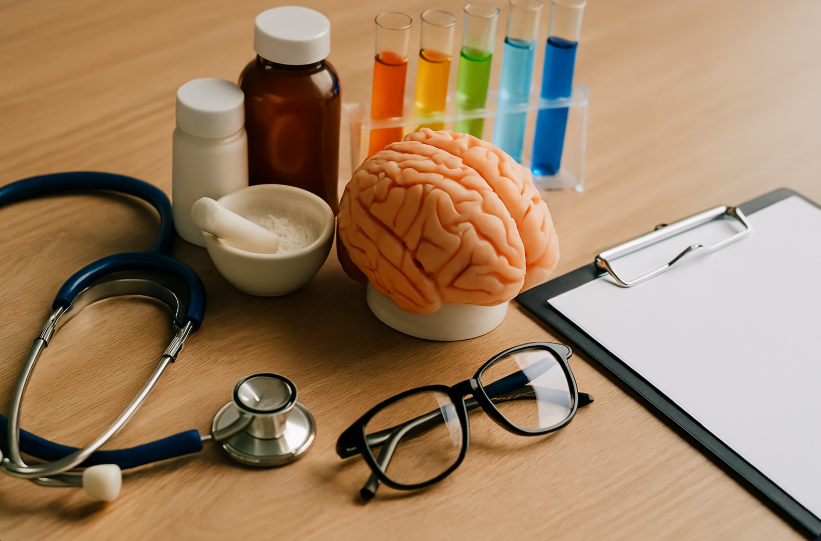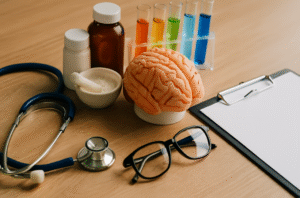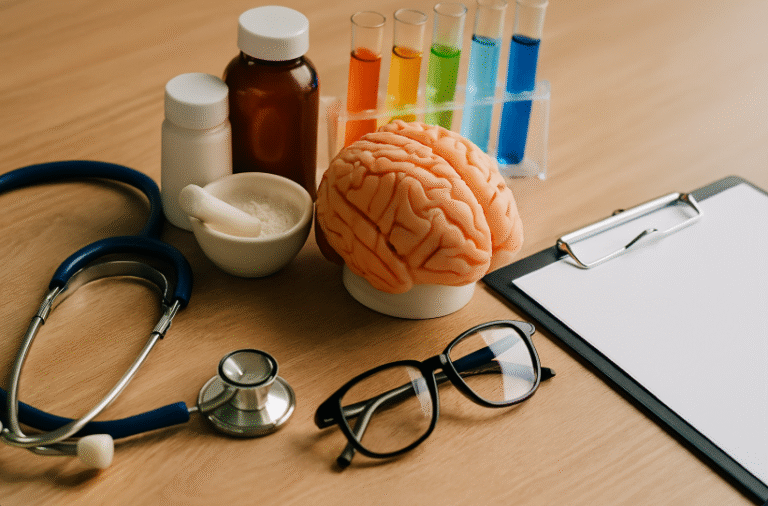
The healthcare industry continues to experience unprecedented growth, creating countless opportunities for aspiring professionals seeking meaningful careers in health and wellness. At the heart of this transformation lies the division of health sciences – a comprehensive academic structure that prepares students for diverse healthcare roles while addressing critical workforce shortages and evolving patient care needs.
Whether you’re a prospective student exploring healthcare career options, a guidance counselor advising students, or a healthcare professional considering additional education, understanding the scope and structure of health sciences divisions is essential for making informed decisions about your educational and professional future.
This comprehensive guide will explore everything you need to know about divisions of health sciences, from their organizational structure and core programs to admission requirements, career pathways, and emerging opportunities in the rapidly evolving healthcare landscape.
What Is a Division of Health Sciences?
A division of health sciences is an integrated academic unit within colleges and universities that houses multiple schools, departments, and programs dedicated to healthcare education, research, and community service. Comprised of schools such as Integrated Health Sciences, Community Health Sciences, Medicine, Dental Medicine, and Nursing, these divisions develop academic, research, and community service programs to meet the health care needs of constantly growing regions.
Fundamental Definition and Core Purpose
The division of health sciences serves as an umbrella organization that brings together various healthcare disciplines under one administrative structure. This integration allows for better coordination of resources, enhanced interprofessional collaboration, and more efficient delivery of healthcare education programs.
The core purpose of a health sciences division extends beyond traditional education to encompass:
- Workforce Development: Addressing critical healthcare shortages by training qualified professionals
- Research Innovation: Conducting cutting-edge research that advances medical knowledge and patient care
- Community Health: Serving local and regional healthcare needs through clinical partnerships and outreach programs
- Interprofessional Education: Preparing students to work collaboratively across healthcare disciplines
Relationship to Medical Education and Healthcare Training
Health sciences divisions differ significantly from standalone medical schools or nursing programs. While medical schools focus primarily on physician education, health sciences divisions embrace a broader, more inclusive approach to healthcare education. They recognize that modern healthcare delivery requires a diverse team of professionals working collaboratively to achieve optimal patient outcomes.
This comprehensive approach reflects the reality of contemporary healthcare, where registered nurses, physical therapist assistants, medical laboratory technologists, and other allied health professionals play crucial roles in patient care delivery.
Integration with Academic Institutions and Universities
Most health sciences divisions operate within larger university systems, allowing students to benefit from shared resources, research facilities, and interdisciplinary collaboration opportunities. This integration provides several advantages:
- Access to state-of-the-art research facilities and equipment
- Opportunities for collaborative research across disciplines
- Shared clinical training sites and simulation centers
- Enhanced student support services and academic resources
- Greater financial stability and resource allocation
Historical Evolution of Health Sciences Divisions
Origins in Medical Education Reform
The concept of health sciences divisions emerged from early 20th century medical education reforms, particularly following the landmark Flexner Report of 1910. This pivotal document called for significant improvements in medical education standards and the establishment of university-affiliated medical schools with strong scientific foundations.
As healthcare became increasingly complex and specialized throughout the mid-1900s, educational institutions recognized the need for more comprehensive approaches to health professional training. The traditional model of isolated professional schools began giving way to more integrated structures that could better prepare students for collaborative healthcare delivery.
Development During the 20th Century Healthcare Expansion
The post-World War II era brought unprecedented growth in healthcare services and technology, creating demand for new types of healthcare professionals. This period saw the emergence of numerous allied health professions, including:
- Medical laboratory technology
- Radiologic technology
- Respiratory therapy
- Physical therapy
- Occupational therapy
- Medical records administration
Educational institutions responded by developing new programs and organizing them within integrated health sciences divisions that could provide shared resources and coordinated training experiences.
Modern Transformation and Digital Age Integration
Today’s health sciences divisions continue evolving to meet contemporary healthcare challenges. Modern transformations include:
- Technology Integration: Incorporating electronic health records, telemedicine, and artificial intelligence into curricula
- Population Health Focus: Emphasizing preventive care, community health, and health disparities reduction
- Interprofessional Education: Developing collaborative learning experiences across healthcare disciplines
- Global Health Perspectives: Preparing students for increasingly diverse patient populations and international health challenges
Organizational Structure and Governance
Administrative Framework and Leadership Hierarchy
Health sciences divisions typically operate under a hierarchical administrative structure designed to coordinate multiple schools, departments, and programs effectively. The typical leadership structure includes:
Division Leadership
- Vice President or Senior Vice Provost for Health Sciences
- Associate Deans for Academic Affairs, Research, and Clinical Affairs
- Administrative Directors for Student Services and Operations
School and Department Leadership
- Deans of individual schools (Medicine, Nursing, Dentistry, etc.)
- Department Chairs or Directors
- Program Coordinators and Faculty Leaders
Support Services Leadership
- Directors of Admissions and Student Services
- Clinical Coordinations and Partnership Directors
- Research and Grant Administration Leaders
Integration with University Systems and Medical Centers
Most health sciences divisions maintain close relationships with university medical centers, teaching hospitals, and healthcare systems. These partnerships provide essential clinical training opportunities for students while ensuring that academic programs remain aligned with real-world healthcare practice requirements.
Key integration elements include:
- Clinical Training Sites: Partnerships with hospitals, clinics, and healthcare facilities for hands-on learning
- Faculty Appointments: Joint appointments between academic departments and clinical services
- Research Collaboration: Shared research facilities and collaborative investigation opportunities
- Service Learning: Community health programs that provide practical experience while serving local needs
Core Schools and Departments Within Health Sciences Divisions
School of Medicine and Medical Education
Medical schools within health sciences divisions typically offer Doctor of Medicine (MD) degrees and may include specialized tracks such as:
- Primary care medicine
- Research-intensive pathways
- Rural and underserved population medicine
- Global health and international medicine
- Medical education and academic medicine
Medical programs generally require four years of study, including two years of foundational sciences and two years of clinical rotations, followed by residency training in chosen specialties.
School of Nursing and Advanced Practice Programs
Nursing schools within health sciences divisions offer multiple educational pathways to accommodate diverse student backgrounds and career goals:
Undergraduate Programs
- Bachelor of Science in Nursing (BSN) for traditional students
- Accelerated BSN programs for students with previous bachelor’s degrees
- Associate Degree in Nursing (ADN) programs at community college level
Graduate Programs
- Master of Science in Nursing (MSN) with specializations
- Doctor of Nursing Practice (DNP) degrees
- Nurse practitioner programs in various specialties
- Nursing administration and education tracks
Advanced Practice Roles
- Nurse practitioners (family, pediatric, psychiatric, etc.)
- Certified registered nurse anesthetists
- Clinical nurse specialists
- Certified nurse midwives
School of Dentistry and Oral Health Sciences
Dental programs within health sciences divisions encompass comprehensive oral healthcare education:
Professional Degree Programs
- Doctor of Dental Surgery (DDS) or Doctor of Dental Medicine (DMD)
- Dental specialty residencies (orthodontics, oral surgery, periodontics)
- Dental public health programs
Allied Dental Programs
- Dental Hygiene Technology programs preparing graduates for preventive oral healthcare roles
- Dental assisting programs
- Dental laboratory technology training
School of Pharmacy and Pharmaceutical Sciences
Pharmacy education within health sciences divisions has evolved significantly to emphasize clinical practice and patient care:
Professional Programs
- Doctor of Pharmacy (PharmD) degrees
- Pharmacy residency and fellowship programs
- Specialized tracks in clinical pharmacy, pharmaceutical sciences, and pharmacy administration
Career Preparation Areas
- Community and retail pharmacy practice
- Hospital and health system pharmacy
- Clinical pharmacy and pharmaceutical care
- Pharmaceutical industry and research
- Pharmacy administration and healthcare management
School of Public Health and Population Sciences
Public health programs focus on preventing disease and promoting health at the population level:
Core Degree Programs
- Master of Public Health (MPH) with various concentrations
- Bachelor of Science in Public Health
- Doctor of Public Health (DrPH) for advanced practice
- PhD programs in public health disciplines
Specialization Areas
- Epidemiology and biostatistics
- Environmental and occupational health
- Health policy and management
- Community health education
- Global health and international health systems
Allied Health Professions and Rehabilitation Sciences
Allied health programs prepare graduates for essential healthcare support roles, with programs such as Diagnostic Sonography, Medical Laboratory Technology, Radiologic Technology, and Respiratory Care Technology earning associate of applied science degrees.
Diagnostic and Therapeutic Programs
- Radiologic technology and medical imaging
- Diagnostic medical sonography
- Nuclear medicine technology
- Radiation therapy
Laboratory and Clinical Support
- Medical laboratory science
- Cytotechnology
- Histotechnology
- Phlebotomy
Rehabilitation and Therapy
- Physical therapy (DPT programs)
- Occupational therapy
- Speech-language pathology
- Audiology
Other Allied Health Specialties
- Respiratory care
- Cardiovascular technology
- Surgical technology
- Medical assisting
Biomedical Sciences and Research Programs
Research-focused programs within health sciences divisions prepare students for careers in biomedical research, pharmaceutical development, and academic medicine:
Graduate Research Programs
- PhD programs in biomedical sciences
- Master’s programs in biotechnology and biomedical engineering
- Combined MD/PhD programs for physician-scientists
- Research fellowship opportunities
Research Focus Areas
- Molecular biology and genetics
- Pharmacology and toxicology
- Immunology and microbiology
- Neuroscience and behavioral health
- Cancer research and oncology
Academic Programs and Degree Offerings
Undergraduate Health Sciences Programs
Undergraduate programs in health sciences divisions serve multiple purposes: preparing students for entry-level healthcare positions, providing foundation coursework for professional programs, and offering broad-based health sciences education for diverse career paths.
Pre-Professional Preparation Programs
- Pre-medicine tracks with required coursework and advising
- Pre-nursing preparation with prerequisite courses
- Pre-pharmacy and pre-dental tracks
- Pre-physical therapy and pre-occupational therapy programs
Direct-Entry Professional Programs
- Bachelor of Science in Nursing (BSN)
- Bachelor of Science in Health Sciences
- Bachelor of Science in Medical Laboratory Science
- Bachelor of Science in Radiologic Sciences
Health Sciences Foundation Programs
- General health sciences with multiple concentration options
- Public health and community health
- Health administration and healthcare management
- Exercise science and wellness promotion
Graduate and Professional Degree Programs
Graduate and professional programs represent the core of health sciences division offerings, preparing students for advanced practice roles and specialized healthcare careers.
Professional Doctoral Programs
- Doctor of Medicine (MD)
- Doctor of Nursing Practice (DNP)
- Doctor of Pharmacy (PharmD)
- Doctor of Physical Therapy (DPT)
- Doctor of Occupational Therapy (OTD)
Master’s Degree Programs
- Master of Science in Nursing (MSN) with specializations
- Master of Public Health (MPH)
- Master of Health Administration (MHA)
- Master of Science in Allied Health disciplines
Research Doctoral Programs
- PhD in Nursing Science
- PhD in Public Health
- PhD in Biomedical Sciences
- PhD in Health Services Research
Certificate Programs and Continuing Education
Health sciences divisions offer numerous certificate programs to meet diverse educational needs:
Professional Certificate Programs
- Certificate programs such as Practical Nursing Education and Medical Assisting Technology certificates
- Post-graduate certificates in nursing specialties
- Continuing education certificates for license maintenance
- Professional development certificates in healthcare leadership
Specialized Training Certificates
- Healthcare quality improvement
- Patient safety and risk management
- Healthcare informatics and technology
- Global health and cultural competency
Interdisciplinary and Joint Degree Options
Modern health sciences divisions increasingly offer interdisciplinary programs that combine healthcare education with other fields:
Joint Degree Programs
- MD/MBA for physician executives
- MSN/MBA for nursing administrators
- PharmD/MBA for pharmaceutical management
- MPH/JD for health policy attorneys
Interdisciplinary Specializations
- Health informatics combining healthcare and information technology
- Biomedical engineering integrating engineering and medical sciences
- Healthcare entrepreneurship blending business and healthcare innovation
- Medical anthropology combining social sciences and healthcare
Admission Requirements and Prerequisites
Common Prerequisites Across Health Science Programs
While specific requirements vary by program, most health sciences programs share common prerequisite foundations:
Science Prerequisites
- General biology with laboratory (typically 2 semesters)
- General chemistry with laboratory (typically 2 semesters)
- Organic chemistry with laboratory (often required for medical and pharmacy programs)
- Physics with laboratory (required for many programs)
- Microbiology (especially for nursing and medical programs)
- Anatomy and physiology (critical for most healthcare programs)
Mathematics Requirements
- College algebra
- Statistics (increasingly important across all programs)
- Calculus (required for some programs, especially pharmacy and engineering-related fields)
Liberal Arts and Social Sciences
- English composition and communication
- Psychology (general and developmental)
- Sociology
- Ethics or philosophy courses
- Cultural diversity or anthropology
Standardized Testing Requirements and Scores
Different health sciences programs require specific standardized tests:
Medical School Admissions
- Medical College Admission Test (MCAT)
- Competitive scores typically range from 28-35 on the old scale or 510-518 on the current scale
- Recent trend toward holistic admissions considering multiple factors beyond test scores
Nursing Program Admissions
- Test of Essential Academic Skills (TEAS)
- Kaplan Nursing Admission Test
- HESI A2 Admission Assessment
- Minimum scores vary by program competitiveness
Other Professional Programs
- Pharmacy College Admission Test (PCAT) for pharmacy programs
- Graduate Record Examination (GRE) for graduate programs
- Dental Admission Test (DAT) for dental programs
Clinical Experience and Volunteer Expectations
Health sciences programs increasingly emphasize practical experience and service commitment:
Healthcare Experience Requirements
- Direct patient care experience (paid or volunteer)
- Medical scribing or healthcare support roles
- Community health volunteering
- International health service trips
- Research experience in healthcare settings
Documentation and Verification
- Detailed logs of experience hours
- Supervisor verification and references
- Reflection essays on healthcare experiences
- Demonstration of professional behavior and commitment
Application Processes and Timeline Considerations
Health sciences program applications follow specific timelines and procedures:
Application Services
- American Medical College Application Service (AMCAS) for medical schools
- Nursing College Application Service (NursingCAS) for many nursing programs
- PharmCAS for pharmacy programs
- Centralized application services streamline the process but require early planning
Timeline Considerations
- Applications typically open 12-18 months before program start dates
- Prerequisites must be completed before matriculation
- Multiple application rounds may be available
- Early application often provides advantages in competitive programs
Competitive Selection Criteria and GPA Requirements
Health sciences programs use holistic admissions processes considering multiple factors:
Academic Performance Indicators
- Overall GPA (typically minimum 3.0, competitive programs often require 3.5+)
- Science GPA calculated separately
- Grade trends and course rigor
- Prerequisite course performance
Non-Academic Selection Factors
- Healthcare experience quality and duration
- Leadership and service activities
- Personal statements and essays
- Letters of recommendation
- Interview performance
- Cultural competency and diversity contribution
Curriculum Design and Educational Approach
Foundational Sciences and Core Knowledge Areas
Health sciences curricula build on strong foundational science knowledge while integrating practical application and clinical reasoning:
Biological Sciences Foundation
- Human anatomy and physiology
- Pathophysiology and disease processes
- Microbiology and infectious diseases
- Pharmacology and therapeutics
- Genetics and molecular biology
Physical Sciences Integration
- Chemistry applications in healthcare
- Physics principles in medical technology
- Mathematics and biostatistics
- Research methodology and evidence evaluation
Social and Behavioral Sciences
- Psychology of health and illness
- Medical sociology and healthcare systems
- Ethics and professional responsibility
- Cultural competency and health disparities
- Communication and patient interaction skills
Clinical Training and Hands-On Learning Components
Practical training represents a cornerstone of health sciences education:
Simulation-Based Learning
- High-fidelity patient simulators for safe skill practice
- Virtual reality and augmented reality training tools
- Standardized patient programs for communication skills
- Team-based simulation exercises for interprofessional collaboration
Clinical Rotations and Externships
- Hospital-based clinical training
- Community health center placements
- Specialty care exposure
- Rural and underserved population experiences
- International clinical opportunities
Laboratory and Practical Skills
- Hands-on laboratory technique training
- Equipment operation and maintenance
- Quality control and safety procedures
- Documentation and record-keeping skills
Interprofessional Education and Collaborative Learning
Modern health sciences education emphasizes team-based care preparation:
Collaborative Learning Experiences
- Joint classes across health professions programs
- Team-based problem-solving exercises
- Interprofessional clinical experiences
- Communication and conflict resolution training
Professional Identity Development
- Understanding roles and scopes of practice across disciplines
- Respect for diverse healthcare professional contributions
- Leadership development within healthcare teams
- Ethics and professional responsibility across disciplines
Technology Integration and Simulation-Based Learning
Health sciences divisions increasingly leverage technology for enhanced learning:
Electronic Health Records Training
- Industry-standard EHR system exposure
- Documentation and coding practice
- Privacy and security protocols
- Integration with clinical decision-making
Telehealth and Remote Care Training
- Virtual consultation skills
- Remote monitoring technology
- Digital health literacy
- Technology troubleshooting and patient support
Artificial Intelligence and Machine Learning Applications
- Understanding AI applications in healthcare
- Data analysis and interpretation skills
- Ethical considerations in AI-assisted care
- Human-technology interaction principles
Research and Innovation Centers
Biomedical Research Institutes and Laboratories
Health sciences divisions typically house extensive research facilities supporting faculty and student investigation:
Basic Science Research Facilities
- Molecular biology and genetics laboratories
- Cell culture and tissue engineering facilities
- Animal research facilities for preclinical studies
- Microscopy and imaging centers
- Biochemistry and analytical laboratories
Specialized Research Centers
- Cancer research institutes
- Cardiovascular research centers
- Neuroscience research facilities
- Infectious disease research laboratories
- Aging and geriatrics research centers
Clinical Research Centers and Trial Facilities
Clinical research represents a critical component of health sciences divisions:
Clinical Trial Infrastructure
- Phase I-IV clinical trial facilities
- Good Clinical Practice (GCP) training and compliance
- Regulatory affairs and protocol development
- Patient recruitment and retention strategies
- Data management and biostatistical analysis
Translational Research Programs
- Bench-to-bedside research initiatives
- Collaborative clinical and basic science projects
- Technology transfer and commercialization support
- Industry partnership development
Population Health and Community-Based Research
Public health research addresses broad health challenges:
Epidemiological Studies
- Community health surveys and assessments
- Disease outbreak investigation capabilities
- Health disparities research
- Environmental health studies
- Behavioral health and intervention research
Health Services Research
- Healthcare delivery system evaluation
- Quality improvement and patient safety research
- Healthcare economics and policy analysis
- Access and utilization studies
Clinical Partnerships and Healthcare Integration
Academic Medical Centers and Teaching Hospitals
Strong clinical partnerships provide essential training opportunities:
University Medical Centers
- Full-service hospitals affiliated with health sciences divisions
- Specialty care services and advanced treatment options
- Research integration with clinical care delivery
- Faculty practice plans and clinical revenue
Teaching Hospital Networks
- Multiple hospital partnerships for diverse experience
- Community hospital affiliations for primary care exposure
- Specialty hospital partnerships for focused training
- Rural hospital partnerships for underserved population experience
Community Health Systems and Rural Partnerships
Health sciences divisions increasingly engage with diverse healthcare settings:
Community Health Centers
- Federally Qualified Health Centers (FQHCs) partnerships
- Primary care training in underserved areas
- Preventive care and population health focus
- Interprofessional team-based care models
Rural Healthcare Partnerships
- Critical access hospital affiliations
- Rural health clinic partnerships
- Telemedicine and remote care training
- Physician and provider shortage area placements
Specialty Care Centers and Outpatient Facilities
Diverse clinical settings provide comprehensive training opportunities:
Ambulatory Care Settings
- Outpatient specialty clinics
- Same-day surgery centers
- Diagnostic and imaging centers
- Rehabilitation and therapy centers
Long-Term Care and Home Health
- Nursing home and assisted living partnerships
- Home healthcare agencies
- Hospice and palliative care services
- Chronic disease management programs
Career Pathways and Professional Outcomes
Healthcare Provider Roles and Specializations
Health sciences education prepares students for diverse healthcare provider roles:
Direct Patient Care Providers
- Physicians across all specialties
- Registered nurses in various settings and specializations
- Nurse practitioners and advanced practice registered nurses
- Physician assistants
- Physical therapists, occupational therapists, and rehabilitation specialists
Diagnostic and Technical Specialists
- Radiologic technologists, dental hygienists, physical therapist assistants, and surgical technologists trained through hands-on programs designed to place graduates on the fast track to rewarding healthcare careers
- Medical laboratory scientists and technicians
- Diagnostic medical sonographers
- Cardiovascular technologists
- Respiratory therapists
Support and Administrative Roles
- Medical assistants and healthcare support staff
- Health information management professionals
- Healthcare quality improvement specialists
- Patient navigation and care coordination roles
Research and Academic Career Opportunities
Health sciences divisions prepare students for research and educational careers:
Academic Medicine and Research
- Faculty positions in health sciences programs
- Clinical research coordinators and managers
- Pharmaceutical and biotechnology research roles
- Government research positions (NIH, CDC, FDA)
Healthcare Policy and Administration
- Healthcare system executives and administrators
- Health policy analysts and consultants
- Healthcare quality and safety officers
- Public health officials and epidemiologists
Healthcare Administration and Leadership Positions
Management and leadership roles require specialized preparation:
Healthcare System Leadership
- Hospital and health system executives
- Clinical department chairs and service line directors
- Healthcare finance and operations management
- Strategic planning and business development
Entrepreneurship and Innovation
- Healthcare technology startup founders
- Medical device and pharmaceutical entrepreneurs
- Healthcare consulting and advisory services
- Digital health and telemedicine innovators
Student Support Services and Resources
Academic Advising and Mentorship Programs
Comprehensive student support ensures academic success and professional development:
Pre-Professional Advising
- Healthcare career exploration and guidance
- Prerequisite course planning and scheduling
- Professional school application assistance
- Standardized test preparation coordination
Professional Program Support
- Faculty mentorship programs
- Peer tutoring and study groups
- Academic remediation and success coaching
- Professional development and career planning
Financial Aid and Scholarship Opportunities
Health sciences education requires significant financial investment, making aid crucial:
Federal and State Financial Aid
- Federal student loans and grants
- State-specific healthcare workforce development programs
- Public Service Loan Forgiveness (PSLF) eligibility for many healthcare careers
- National Health Service Corps loan repayment programs
Institution-Specific Aid
- Merit-based scholarships for high-achieving students
- Need-based grants and financial assistance
- Work-study programs in healthcare settings
- Research assistantships and graduate stipends
External Scholarships and Grants
- Professional organization scholarships
- Healthcare foundation grants
- Diversity and inclusion scholarships
- Service commitment scholarship programs
Student Organizations and Professional Development
Extracurricular involvement enhances professional preparation:
Professional Student Organizations
- American Medical Student Association (AMSA)
- National Student Nurses Association (NSNA)
- Student National Medical Association (SNMA)
- Program-specific professional organizations
Service and Leadership Opportunities
- Community health outreach programs
- Medical mission trips and global health initiatives
- Healthcare advocacy and policy engagement
- Peer mentoring and tutoring programs
Career Services and Job Placement Support
Career preparation begins early and continues through graduation:
Career Exploration and Planning
- Healthcare career assessments and counseling
- Job shadowing and informational interview coordination
- Resume and interview preparation
- Professional networking event organization
Job Placement and Career Support
- Clinical site and employment partnerships
- Job fair and recruitment event coordination
- Alumni mentorship and networking programs
- Continuing education and professional development support
Technology and Innovation in Health Sciences Education
Simulation Centers and Virtual Learning Environments
Advanced technology enhances learning effectiveness and safety:
High-Fidelity Simulation
- Full-body patient simulators with realistic responses
- Partial-task trainers for specific skill development
- Standardized patient programs for communication training
- Debriefing and performance analysis technology
Virtual and Augmented Reality
- 3D anatomy visualization and manipulation
- Virtual surgery and procedure simulation
- Augmented reality for enhanced clinical training
- Distance learning and remote simulation capabilities
Electronic Health Records Training Systems
EHR proficiency has become essential for healthcare professionals:
Industry-Standard Training Platforms
- Epic, Cerner, and other major EHR system exposure
- Clinical documentation and coding practice
- Order entry and decision support training
- Privacy, security, and HIPAA compliance
Integration with Clinical Training
- EHR use during clinical rotations and externships
- Real-world documentation and workflow experience
- Quality metrics and meaningful use understanding
- Interoperability and health information exchange
Artificial Intelligence and Machine Learning Applications
AI integration represents the future of healthcare education:
AI-Assisted Learning
- Adaptive learning platforms personalizing education
- Natural language processing for clinical documentation
- Predictive analytics for student success intervention
- Automated assessment and feedback systems
AI in Healthcare Training
- Understanding AI applications in clinical decision-making
- Ethical considerations and bias recognition
- Human-AI collaboration and oversight responsibilities
- Data quality and algorithm validation principles
Frequently Asked Questions
What are the main components of a division of health sciences?
A division of health sciences typically includes multiple schools and departments such as medicine, nursing, dentistry, pharmacy, public health, and allied health programs. These divisions are comprised of schools like Integrated Health Sciences, Community Health Sciences, Medicine, Dental Medicine, and Nursing, developing academic, research, and community service programs to meet healthcare needs. The structure allows for integrated education, shared resources, and interprofessional collaboration among healthcare disciplines.
How do I choose the right health sciences program for my career goals?
Choosing the right program requires careful consideration of your interests, aptitudes, and career objectives. Start by exploring different healthcare roles through job shadowing, volunteering, or informational interviews. Consider factors such as direct patient care versus research interests, length of educational commitment, financial investment, and geographic preferences. Many health sciences divisions offer career exploration programs and advising services to help prospective students make informed decisions.
When considering science project name ideas for students interested in health sciences, research-based projects focusing on public health, medical technology, or healthcare innovation can provide valuable exposure to the field. Similarly, students exploring various academic options might consider how programs like Shepherd University’s computer science program could complement health sciences education through health informatics or medical technology applications.
What are the typical admission requirements for health sciences programs?
Admission requirements vary by program but generally include prerequisite coursework in sciences (biology, chemistry, physics), mathematics, and liberal arts. Most programs require standardized testing such as the MCAT for medical school, TEAS for nursing programs, or GRE for graduate programs. Healthcare experience, volunteer work, letters of recommendation, and personal statements are also crucial components. Competitive GPAs typically range from 3.0 minimum to 3.5+ for highly competitive programs.
How long do health sciences degree programs typically take to complete?
Program duration varies significantly by career path. Certificate programs range from one semester to two academic years (3 to 24 months) in length. Associate degree programs typically require two years, bachelor’s degrees take four years, and professional doctoral programs (medicine, pharmacy, physical therapy) require additional 3-4 years beyond undergraduate study. Advanced practice and specialty training can add several more years, particularly for medical specialties requiring residency and fellowship training.
What is the job market outlook for health sciences graduates?
The healthcare industry continues experiencing strong growth due to aging populations, increased access to healthcare, and technological advances. Many health sciences programs boast 100% pass rates on their students’ first attempt at licensure and certification tests. The Bureau of Labor Statistics projects faster-than-average growth for most healthcare occupations, with particularly strong demand for nurses, physical therapists, medical assistants, and allied health professionals. Rural and underserved areas often have acute shortages, providing excellent opportunities for graduates willing to serve these populations.
How much does it cost to pursue a degree in health sciences?
Costs vary widely depending on program type, institution (public versus private), and state residency status. Community college allied health programs may cost $3,000-$15,000 total, while professional doctoral programs can exceed $200,000-$300,000. Many students utilize federal financial aid, scholarships, and loan repayment programs. Some healthcare employers offer tuition assistance or loan repayment in exchange for service commitments, particularly in underserved areas.
What are the differences between public and private health sciences divisions?
Public institutions typically offer lower tuition rates, especially for in-state residents, and may have larger program sizes and more diverse student populations. Private institutions often provide smaller class sizes, more individualized attention, and potentially more resources per student. Both can offer excellent education quality, but private institutions generally cost significantly more. Public institutions may have stronger community partnerships and focus on serving state healthcare workforce needs.
Can I transfer credits between different health sciences programs?
Credit transfer policies vary by institution and program. General education and prerequisite courses typically transfer more easily than specialized professional coursework. Accreditation by recognized bodies improves transferability. Students should work closely with academic advisors when considering transfers, as professional programs often have specific sequencing requirements and clinical partnerships that may not align perfectly between institutions. Some programs offer articulation agreements facilitating transfers.
Conclusion
The division of health sciences represents a dynamic and essential component of higher education, preparing the next generation of healthcare professionals to meet evolving patient care needs and community health challenges. From traditional roles in medicine and nursing to emerging careers in health informatics and population health, these comprehensive educational structures provide pathways to meaningful, stable, and rewarding careers in the rapidly growing healthcare sector.
As healthcare continues evolving with technological advances, changing demographics, and new models of care delivery, health sciences divisions adapt their programs to ensure graduates are well-prepared for contemporary practice. The emphasis on interprofessional education, community engagement, and evidence-based practice reflects the collaborative nature of modern healthcare and the importance of addressing health disparities and access challenges.
For prospective students considering healthcare careers, exploring the offerings within health sciences divisions provides opportunities to find programs aligned with personal interests, aptitudes, and career goals. Whether pursuing direct patient care, research, administration, or public health, the comprehensive nature of health sciences divisions ensures access to quality education, clinical training, and support services necessary for professional success.
The continued growth and evolution of health sciences divisions will play a crucial role in addressing healthcare workforce shortages, advancing medical knowledge through research, and improving health outcomes for diverse populations. As you consider your educational and career options, the programs and opportunities within health sciences divisions offer pathways to making a meaningful difference in individual lives and community health outcomes.










